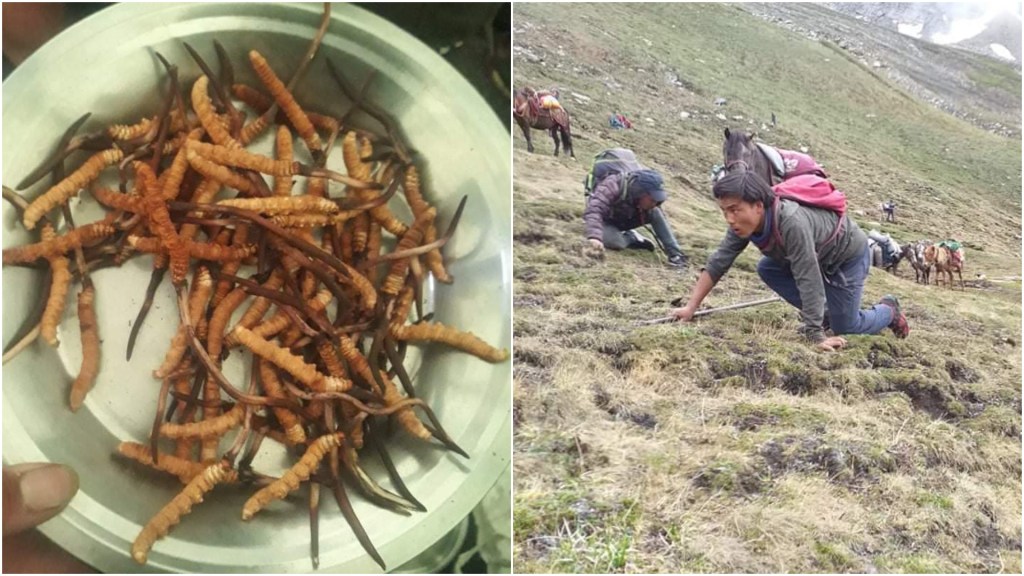Tenzin Dakpa was six when he escaped to India for the first time 19 years ago. “I came with my family friends, leaving behind my family,” he tells VICE. He doesn’t remember much of Tibet but like most Tibetans living in exile, he remembers rushing back home from a long day at school and eating delicious food cooked by his mother. Today, as he recollects those faint memories, he says he lives with only one dream. “To go back and experience what Tibet used to be like, with its clean air and water. You don’t even need Bisleri. You can just drink from the waters that flow from Tibet. I want that Tibet,” he says.
This month, when the world marked the global climate strikes, so did the approximately 1,00,000 Tibetans (as of October 2017, according to the United Nations High Commissioner for Refugees) who are living in exile in India. Even the Dalai Lama—the apex spiritual leader for the Tibetans—has shown support for Greta Thunberg’s movement, saying, “It is encouraging to see how you have opened the eyes of the world to the urgency to protect our planet, our only home. At the same time, you have inspired so many young brothers and sisters to join this movement.”
Videos by VICE

Dakpa is among the many who find themselves responding to the state of emergency that the prospect of losing their homes forever brings, not just to political oppression but also the severe effects of climate change. Tibet is called the world’s “third pole”, comprising 46,000 glaciers covering an area of 105,000 square kilometres. So rich is its ecosystem that it nourishes 10 downstream countries including China and India. And yet, those lands are in danger because of unprecedented, and often criticised, construction and urbanisation by the Chinese government.

“Most times, whenever we have spoken up about any political issue, even climate change, it’s almost always at the risk of our families back in Tibet. In a way, even the fact that I, or anyone outside Tibet, speak up means that we’re risking the possibility of going back home one day,” says the 25-year-old Dakpa. Calling home is also dangerous, as there have been several cases of Tibetans getting arrested for having political conversations on the phone.

Dharamshala-based Gyaltsen tells VICE that his activism, as someone who makes campaigns for Tibetan issues in India, is nothing short of dangerous. “My whole family is in Tibet and in a way, my activism is like sacrificing myself for this issue. If I fight for independence and climate change and be visible in the media, I wouldn’t be able to go back to Tibet because if I go, they might arrest me and put me in jail,” says the 31-year-old who moved to India with his younger sister in 2004. “But it’s time we speak up anyway. For me, if being visible in my activism is a problem, then it’s a problem. Nothing more.”
For most Tibetans, the political and the personal are often indistinguishable. For over the last 60 years, India has seen one of the largest populations of Tibetans who’ve left their homeland to escape political oppression by China. There have been reports on human rights violations as well as those on land grabbing for construction projects in Tibet Autonomous Region and other Tibetan areas, along with mining on Tibetan sacred mountains. And then there are reports showing an overwhelming increase in the melting glaciers, snow, ice, and permafrost that is projected to increase natural calamities such as avalanches, rockfalls, floods, and landslides.


In fact, experts say that Tibet is melting three times faster than the rest of the world. Also worrying is the data that projects that by 2050, the mean temperatures in the Hindu Kush Himalayan region will increase by 1-2 degrees Celsius. This means that the 1.3 billion lives across 10 nations, including South Asia and China, are potentially in danger because of increased chances of not just erratic but also violent and intense monsoons, and loss of glacier ice.
“Sadly, whenever there is a discussion on climate change or global warming, the issue of Tibet is not highlighted or discussed as it should be,” says Rinzin Choedon, the national director for Tibetan organisation Students for a Free Tibet, who’s been organising events around the theme of “Climate Crisis in Tibet: Rivers under threat in Asia” across the country. “But we want to be a part of the global movement and make sure we bring Tibet to the table as well since there are around 10 downstream countries that depend on Tibet’s freshwater and resources, including India.”


Today, several Tibetans in Dharamshala—where the Tibetan government-in-exile is based out of—are joining the last day of global climate strikes, along with the rest of the country. And in doing so, the community wants the world to understand the anxieties of what losing a home means. “I sometimes tell people that Tibetans outside of Tibet will always be nomads,” says Dakpa. “Most people differentiate between social work, environmental issues, and political work. But for me, everything is about freedom of Tibet. The environment is something people should talk about, especially when they’re talking about the freedom of Tibet. The major rivers come from Tibet. Everyone should deserve to use those rivers.”
That the young are inheriting the future is a sentiment that’s especially distressing for Tibetans. Gyaltsen, who moved to India when he was 16, adds that protesting about climate change is the only thing they can give to the generations to come. “There will always be fluctuations in politics, but climate change is going to be there for several generations. Tomorrow, my children may blame me if I don’t say anything about climate change now. That responsibility is mine, and so is everyone else’s,” he says. “If we don’t act now, it’s not just the Tibetans, but the whole Asia region will suffer.”
Follow Pallavi Pundir on Twitter.




